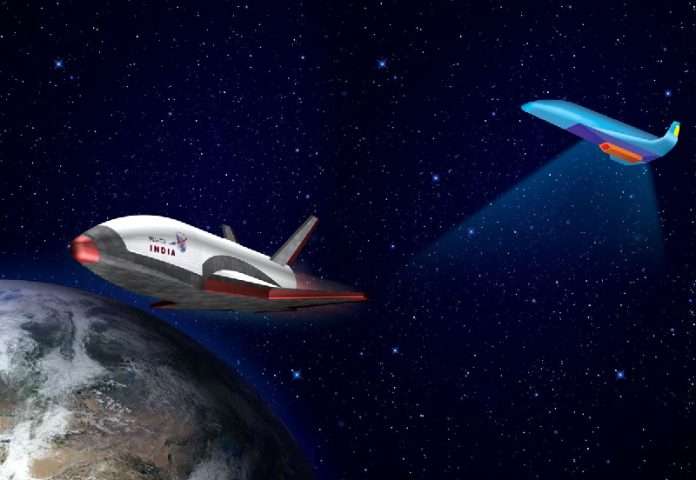In a significant milestone in developing India’s own reusable launch vehicle that is similar to a space shuttle, Isro in collaboration with the IAF and DRDO successfully conducted the RLV autonomous landing mission (RLV LEX) at Chitradurga in Karnataka in the wee hours of Sunday.
In a first in the world, a winged body (RLV) was carried to an altitude of 4.5 km by a (IAF Chinook) helicopter and released for carrying out an autonomous landing on a runway, Isro said in a statement. Interestingly, the IAF team, which participated in the mission, was headed by a woman officer who is a flight test engineer at Aircraft and Systems Testing Establishment, tweeted the air force.
Thanking the RLV team, Isro chairman S Somanath said, “It was a perfect landing.
With this mission, we are a step closer to developing India’s own reusable rocket or reusable launch craft . I am sure it is meeting all the objectives of the mission that were defined long back. The RLV idea was proposed 20 years ago and I thank Jayakumar M (RLV project director) and all the scientists who worked over the years for the mission. A few more landing experiments in different conditions will continue to prove the ruggedness of the algorithm and hardware we have put in.”
Once the predetermined pillbox parameters were attained, the RLV was released in mid-air. Release conditions included 10 parameters covering position, velocity, altitude and body rates. The release of RLV was autonomous. RLV then performed approach and landing maneuvers using the Integrated Navigation, Guidance & control system and completed an autonomous landing on the ATR airstrip at 7.40 am.
“The autonomous landing was carried out under the exact conditions of a space re-entry vehicle’s landing —high speed, unmanned, precise landing from the same return path— as if the vehicle arrived from space. Landing parameters such as ground relative velocity, the sink rate of landing gears, and precise body rates, as might be experienced by an orbital re-entry space vehicle in its return path, were achieved,” it said. The IAF team in collaboration with the RLV project team had conducted multiple sorties to perfect the achievement of RLV release conditions.
Earlier, Isro had demonstrated the re-entry of its winged vehicle RLV-TD in the HEX mission in May 2016. The re-entry of a hypersonic sub-orbital vehicle marked a major accomplishment in developing RLVs. “The LEX began with an integrated navigation test in 2019 and followed multiple engineering model trials and captive phase tests in subsequent years,” said the agency’s statement.
Besides Isro and IAF, DRDO’s bodies — Centre for Military Airworthiness and Certification (CEMILAC), Aeronautical Development Establishment, and its R&D lab ADRDE— are involved in the RLV programme.
Source-The Times Of India

















